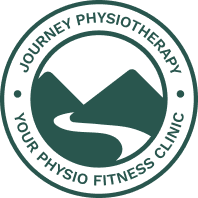Sport injuries: Ankle sprains
An ankle sprain is still one of the most common youth sport injuries, in fact even in adults playing recreational sport it is one of the most common visits to the emergency room. A sport like squash sees its fair number! Although still common practice few ankle sprains actually require an x-ray (a visit to emergency) but rarely do people or clinicians know to use the Ottawa ankle rules (tender to touch around the ankle bones or inability to weight bare).
The Sports Medicine of Australia has good basic information on what structures are involved and what the common causes are. Where sites like this go wrong, is the now out-dated information on immediate management and ongoing rehab. As in many areas of rehab nothing is set in stone and some of these suggestions will evolve with time. One of the most important changes in my mind is shift from the simple advice or RICE (rest, ice, compression, elevation) to PEACE & LOVE. This new acronym is much more comprehensive and considers the whole person, not just the local injury. Finally its important to remember the body is built to heal. Things do not have to be complicated, the body wants to heal and if given time and a healthy environment it will do its job. With this in mind lets discuss how you might build up during the natural healing process to give yourself the best chance at a safe return to sport.
The rehab strategies I like to employ often follow the path described below. Obviously each persons age, goals, sports and interests will effect how each stage is implemented. Its also important to remember nothing is totally linear. Often before walking is perfected you may be able to do other lower body movements. Balance and sensory exercises may also be started in the early stages if the challenge is appropriate.
1. Gradually build all lower body movements: walking, squat, deadlift, lunge, split squat, step up.
Depending on the severity of the sprain a period of time limping is normal and encouraged to reduce stress on the area. Biking is often a great intermediary activity to keep the body moving while limiting ankle stress.
2. Build running and jumping: light skipping, hops, running on the spot.
3. Build side to side: shuffles, jumps, figure 8s.
4. Build balance, sensation and strength of ankle: calf raise, balance, single foot catch, ankle rolls, be creative. Ensure left to right differences are negligible.
5. Build in to your sports gradually over 4 weeks.
6. Maintain ankle strength, balance, and range of motion.
7. Like any injury be as healthy as you can be. If you can not walk, try biking or upper-body weight lifting. Be mindful of your sleep, eat well, and give the body its best chance to heal.
This process is the basis of many acute injuries. The process is tailored for the severity, the goals, and the needs of the patient. I hope the offers a little insight into what working with me will be like. Cheers
Dave

